Accounting Systems and Processes: Detailed Financial Report Analysis
VerifiedAdded on 2020/03/28
|27
|1538
|44
Report
AI Summary
This report delves into the core concepts of accounting systems and processes, emphasizing the use of spreadsheets for financial reporting and analysis. It covers essential topics such as naming cells, handling negative numbers, data separation, and the application of IF functions. The report explores periodic inventory systems and the use of spreadsheets to generate financial reports. Furthermore, it includes detailed analyses of financial statements, including the direct write-off and allowance methods for bad debts, and provides an assessment of a company's financial position. A case study on Wesfarmers Limited is presented, analyzing its comprehensive income statement, dividends, return on equity, and earnings per share, alongside discussions on risk mitigation and corporate governance. The report concludes with a balance sheet analysis and investment advice for Vikram, offering a thorough overview of the company's financial health and future prospects. The document utilizes original and revised data and includes references to support the analysis.
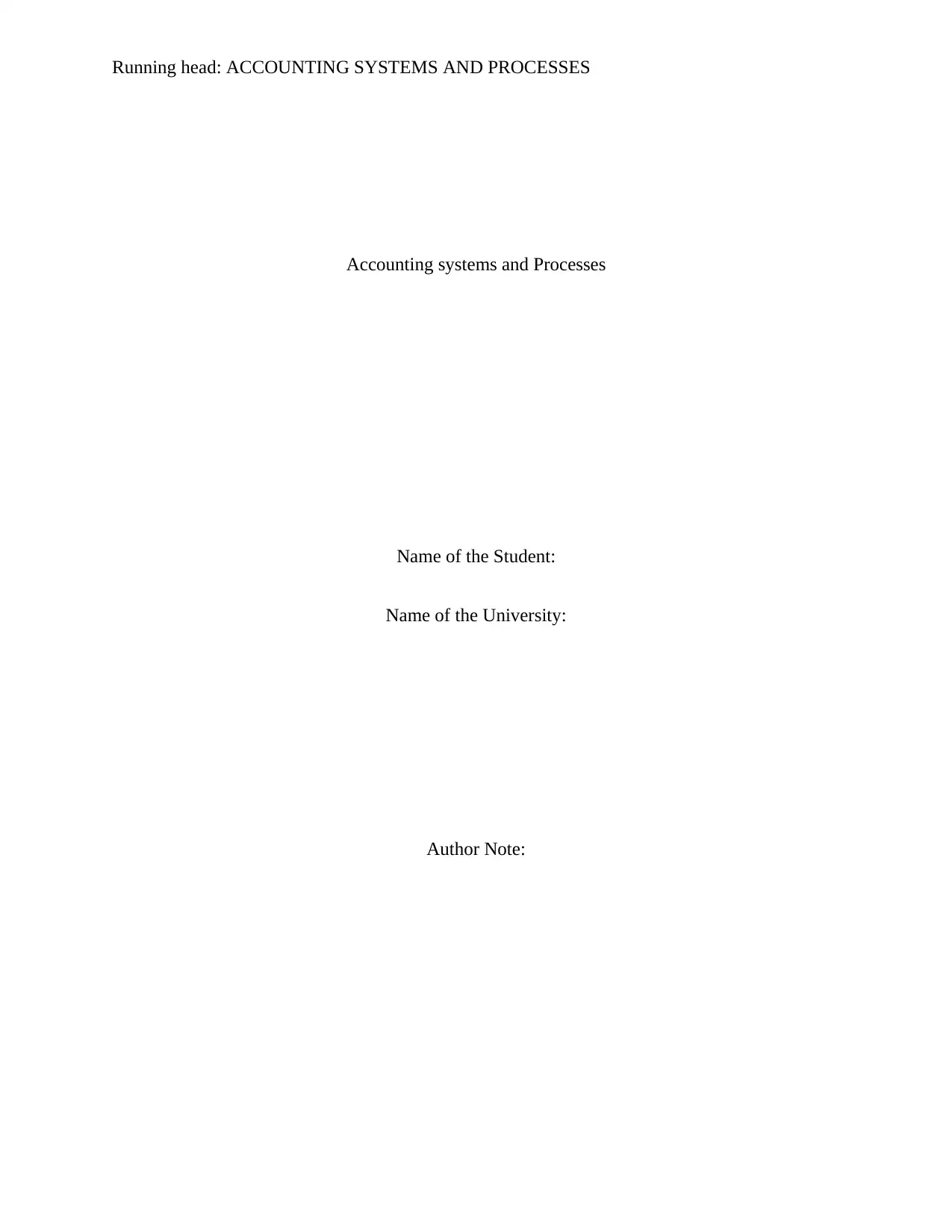
Running head: ACCOUNTING SYSTEMS AND PROCESSES
Accounting systems and Processes
Name of the Student:
Name of the University:
Author Note:
Accounting systems and Processes
Name of the Student:
Name of the University:
Author Note:
Paraphrase This Document
Need a fresh take? Get an instant paraphrase of this document with our AI Paraphraser
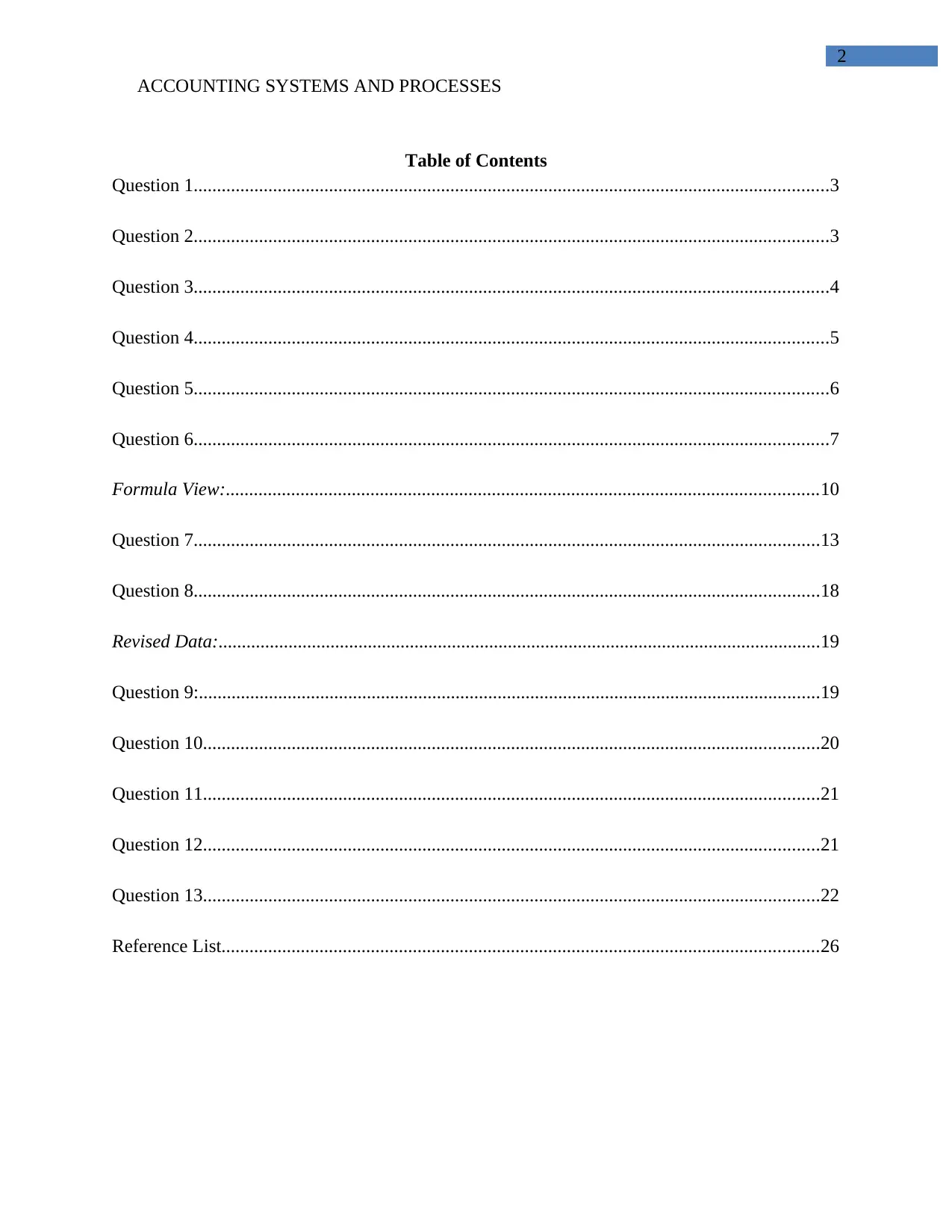
2
ACCOUNTING SYSTEMS AND PROCESSES
Table of Contents
Question 1........................................................................................................................................3
Question 2........................................................................................................................................3
Question 3........................................................................................................................................4
Question 4........................................................................................................................................5
Question 5........................................................................................................................................6
Question 6........................................................................................................................................7
Formula View:...............................................................................................................................10
Question 7......................................................................................................................................13
Question 8......................................................................................................................................18
Revised Data:.................................................................................................................................19
Question 9:.....................................................................................................................................19
Question 10....................................................................................................................................20
Question 11....................................................................................................................................21
Question 12....................................................................................................................................21
Question 13....................................................................................................................................22
Reference List................................................................................................................................26
ACCOUNTING SYSTEMS AND PROCESSES
Table of Contents
Question 1........................................................................................................................................3
Question 2........................................................................................................................................3
Question 3........................................................................................................................................4
Question 4........................................................................................................................................5
Question 5........................................................................................................................................6
Question 6........................................................................................................................................7
Formula View:...............................................................................................................................10
Question 7......................................................................................................................................13
Question 8......................................................................................................................................18
Revised Data:.................................................................................................................................19
Question 9:.....................................................................................................................................19
Question 10....................................................................................................................................20
Question 11....................................................................................................................................21
Question 12....................................................................................................................................21
Question 13....................................................................................................................................22
Reference List................................................................................................................................26
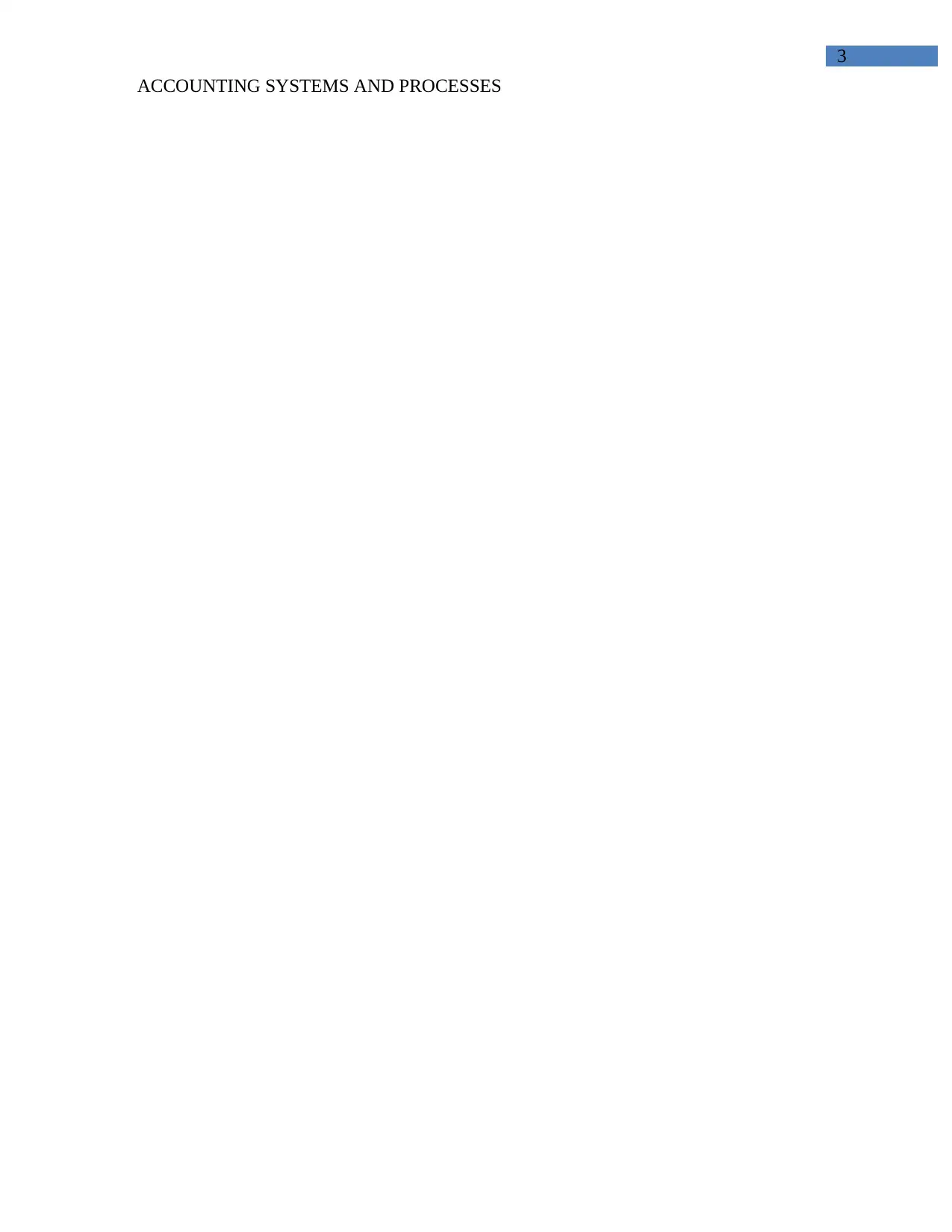
3
ACCOUNTING SYSTEMS AND PROCESSES
ACCOUNTING SYSTEMS AND PROCESSES
⊘ This is a preview!⊘
Do you want full access?
Subscribe today to unlock all pages.

Trusted by 1+ million students worldwide
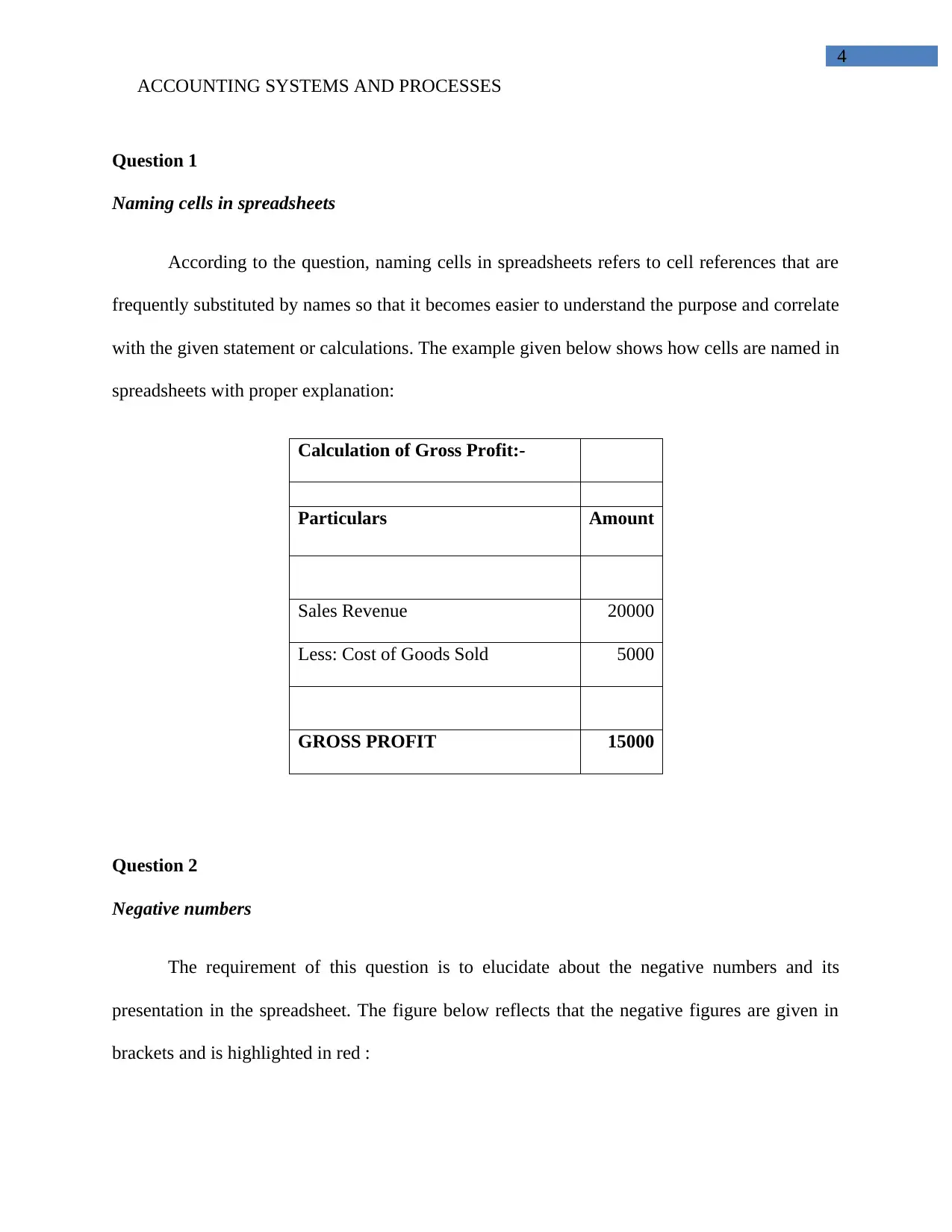
4
ACCOUNTING SYSTEMS AND PROCESSES
Question 1
Naming cells in spreadsheets
According to the question, naming cells in spreadsheets refers to cell references that are
frequently substituted by names so that it becomes easier to understand the purpose and correlate
with the given statement or calculations. The example given below shows how cells are named in
spreadsheets with proper explanation:
Calculation of Gross Profit:-
Particulars Amount
Sales Revenue 20000
Less: Cost of Goods Sold 5000
GROSS PROFIT 15000
Question 2
Negative numbers
The requirement of this question is to elucidate about the negative numbers and its
presentation in the spreadsheet. The figure below reflects that the negative figures are given in
brackets and is highlighted in red :
ACCOUNTING SYSTEMS AND PROCESSES
Question 1
Naming cells in spreadsheets
According to the question, naming cells in spreadsheets refers to cell references that are
frequently substituted by names so that it becomes easier to understand the purpose and correlate
with the given statement or calculations. The example given below shows how cells are named in
spreadsheets with proper explanation:
Calculation of Gross Profit:-
Particulars Amount
Sales Revenue 20000
Less: Cost of Goods Sold 5000
GROSS PROFIT 15000
Question 2
Negative numbers
The requirement of this question is to elucidate about the negative numbers and its
presentation in the spreadsheet. The figure below reflects that the negative figures are given in
brackets and is highlighted in red :
Paraphrase This Document
Need a fresh take? Get an instant paraphrase of this document with our AI Paraphraser
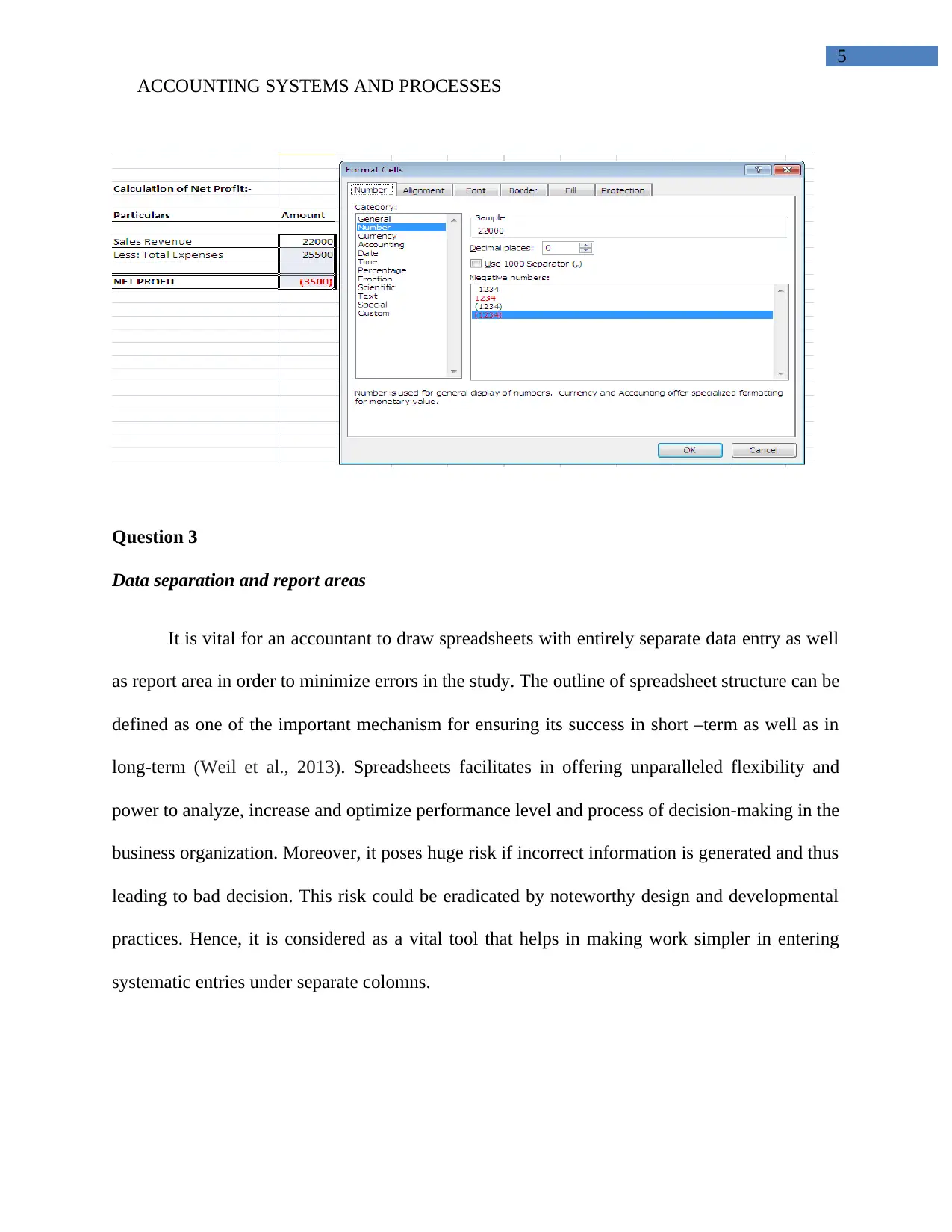
5
ACCOUNTING SYSTEMS AND PROCESSES
Question 3
Data separation and report areas
It is vital for an accountant to draw spreadsheets with entirely separate data entry as well
as report area in order to minimize errors in the study. The outline of spreadsheet structure can be
defined as one of the important mechanism for ensuring its success in short –term as well as in
long-term (Weil et al., 2013). Spreadsheets facilitates in offering unparalleled flexibility and
power to analyze, increase and optimize performance level and process of decision-making in the
business organization. Moreover, it poses huge risk if incorrect information is generated and thus
leading to bad decision. This risk could be eradicated by noteworthy design and developmental
practices. Hence, it is considered as a vital tool that helps in making work simpler in entering
systematic entries under separate colomns.
ACCOUNTING SYSTEMS AND PROCESSES
Question 3
Data separation and report areas
It is vital for an accountant to draw spreadsheets with entirely separate data entry as well
as report area in order to minimize errors in the study. The outline of spreadsheet structure can be
defined as one of the important mechanism for ensuring its success in short –term as well as in
long-term (Weil et al., 2013). Spreadsheets facilitates in offering unparalleled flexibility and
power to analyze, increase and optimize performance level and process of decision-making in the
business organization. Moreover, it poses huge risk if incorrect information is generated and thus
leading to bad decision. This risk could be eradicated by noteworthy design and developmental
practices. Hence, it is considered as a vital tool that helps in making work simpler in entering
systematic entries under separate colomns.
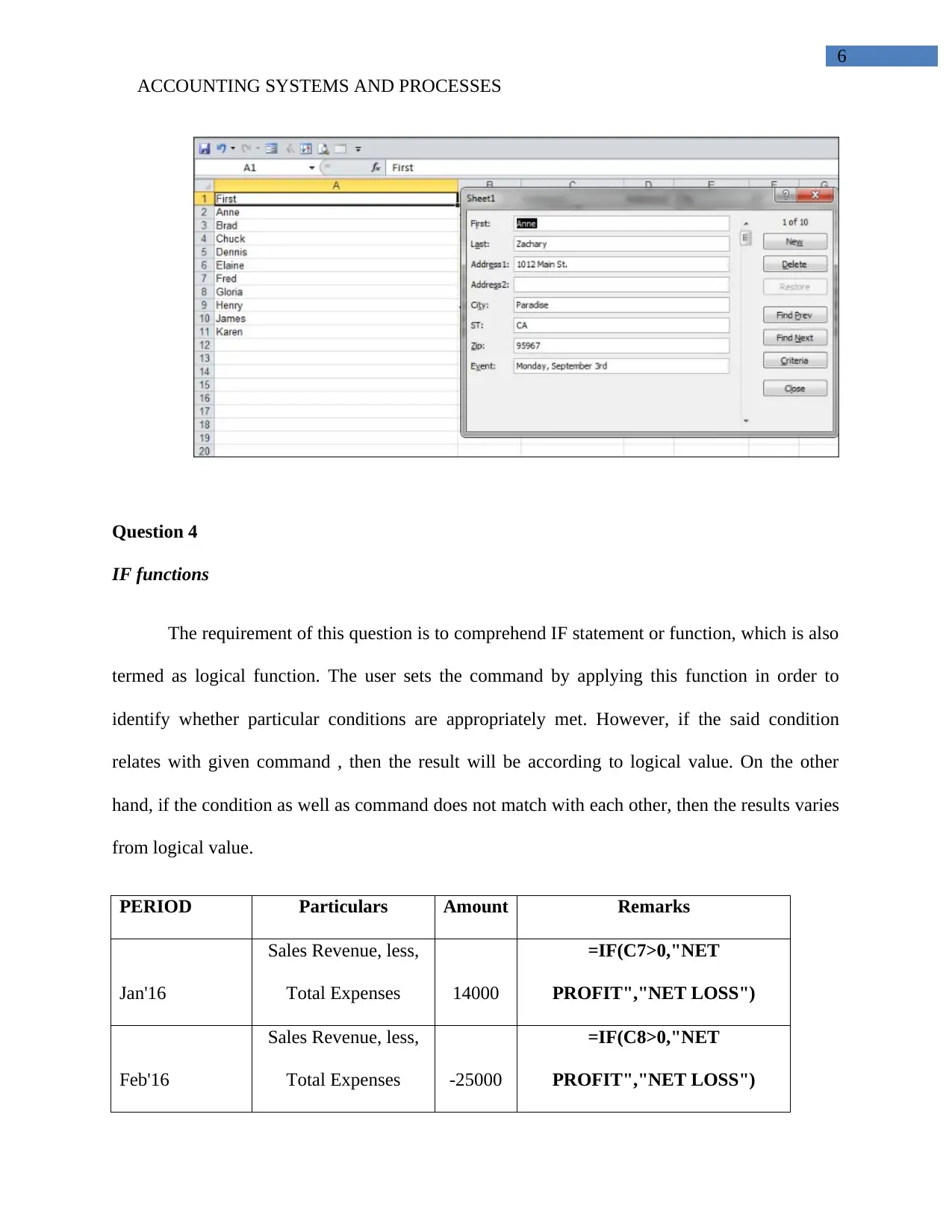
6
ACCOUNTING SYSTEMS AND PROCESSES
Question 4
IF functions
The requirement of this question is to comprehend IF statement or function, which is also
termed as logical function. The user sets the command by applying this function in order to
identify whether particular conditions are appropriately met. However, if the said condition
relates with given command , then the result will be according to logical value. On the other
hand, if the condition as well as command does not match with each other, then the results varies
from logical value.
PERIOD Particulars Amount Remarks
Jan'16
Sales Revenue, less,
Total Expenses 14000
=IF(C7>0,"NET
PROFIT","NET LOSS")
Feb'16
Sales Revenue, less,
Total Expenses -25000
=IF(C8>0,"NET
PROFIT","NET LOSS")
ACCOUNTING SYSTEMS AND PROCESSES
Question 4
IF functions
The requirement of this question is to comprehend IF statement or function, which is also
termed as logical function. The user sets the command by applying this function in order to
identify whether particular conditions are appropriately met. However, if the said condition
relates with given command , then the result will be according to logical value. On the other
hand, if the condition as well as command does not match with each other, then the results varies
from logical value.
PERIOD Particulars Amount Remarks
Jan'16
Sales Revenue, less,
Total Expenses 14000
=IF(C7>0,"NET
PROFIT","NET LOSS")
Feb'16
Sales Revenue, less,
Total Expenses -25000
=IF(C8>0,"NET
PROFIT","NET LOSS")
⊘ This is a preview!⊘
Do you want full access?
Subscribe today to unlock all pages.

Trusted by 1+ million students worldwide
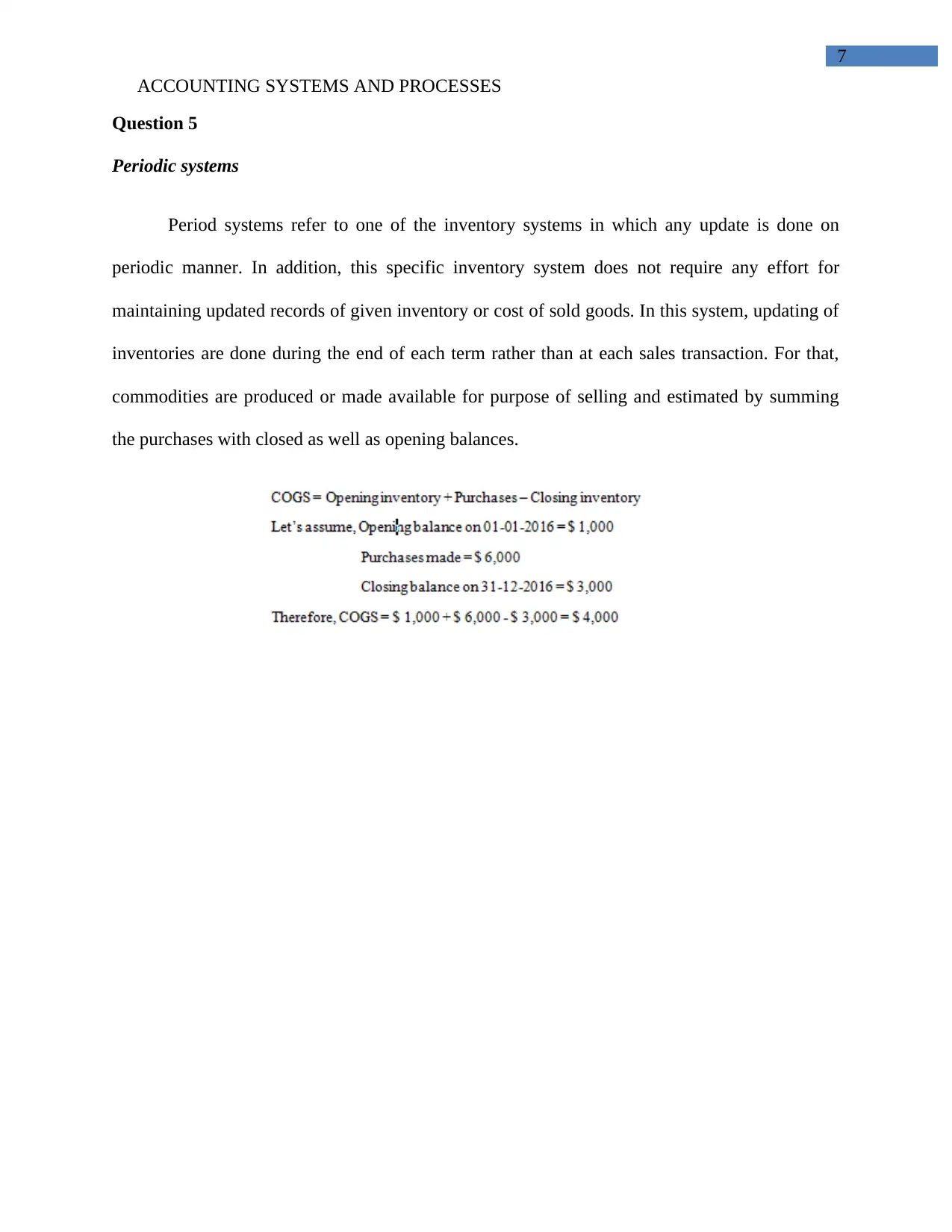
7
ACCOUNTING SYSTEMS AND PROCESSES
Question 5
Periodic systems
Period systems refer to one of the inventory systems in which any update is done on
periodic manner. In addition, this specific inventory system does not require any effort for
maintaining updated records of given inventory or cost of sold goods. In this system, updating of
inventories are done during the end of each term rather than at each sales transaction. For that,
commodities are produced or made available for purpose of selling and estimated by summing
the purchases with closed as well as opening balances.
ACCOUNTING SYSTEMS AND PROCESSES
Question 5
Periodic systems
Period systems refer to one of the inventory systems in which any update is done on
periodic manner. In addition, this specific inventory system does not require any effort for
maintaining updated records of given inventory or cost of sold goods. In this system, updating of
inventories are done during the end of each term rather than at each sales transaction. For that,
commodities are produced or made available for purpose of selling and estimated by summing
the purchases with closed as well as opening balances.
Paraphrase This Document
Need a fresh take? Get an instant paraphrase of this document with our AI Paraphraser
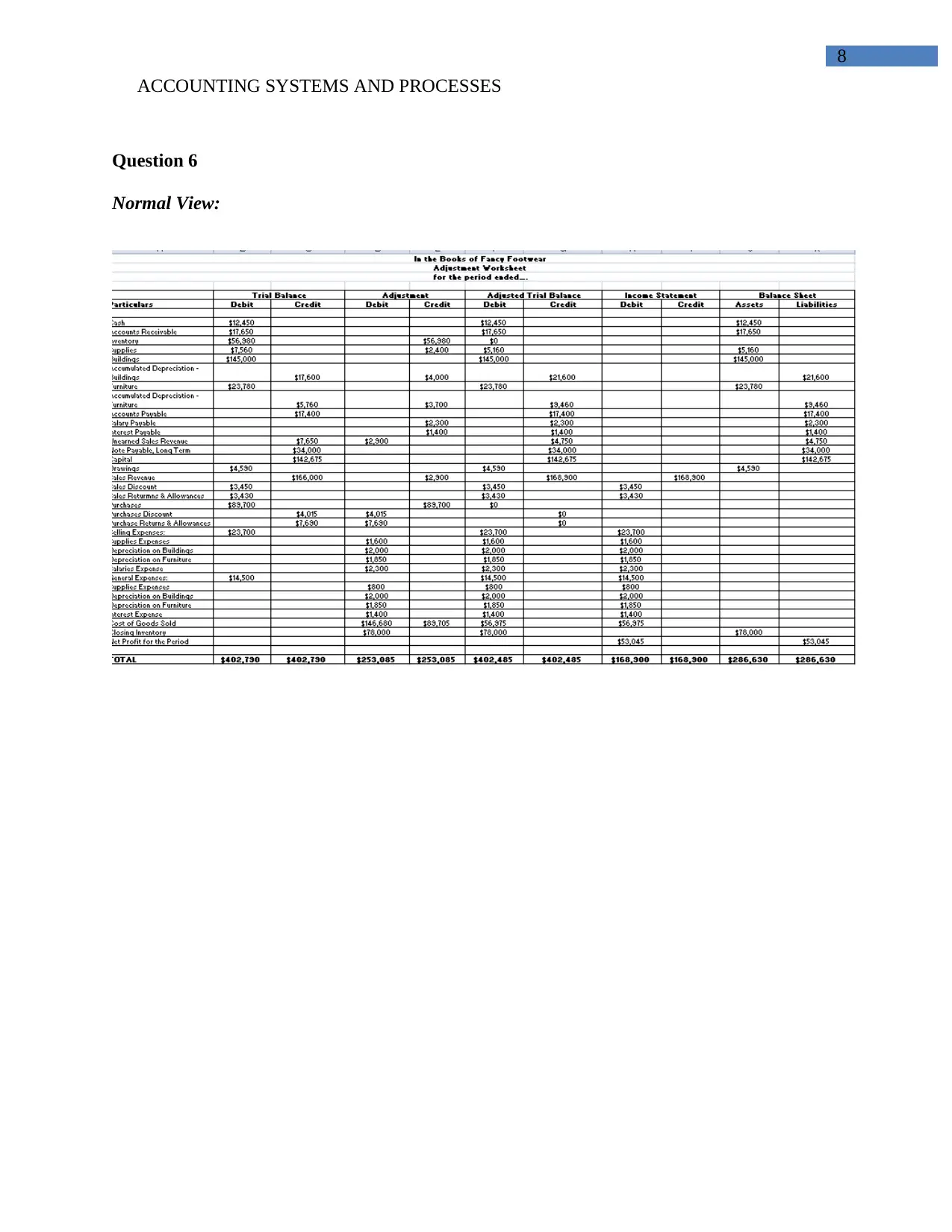
8
ACCOUNTING SYSTEMS AND PROCESSES
Question 6
Normal View:
ACCOUNTING SYSTEMS AND PROCESSES
Question 6
Normal View:
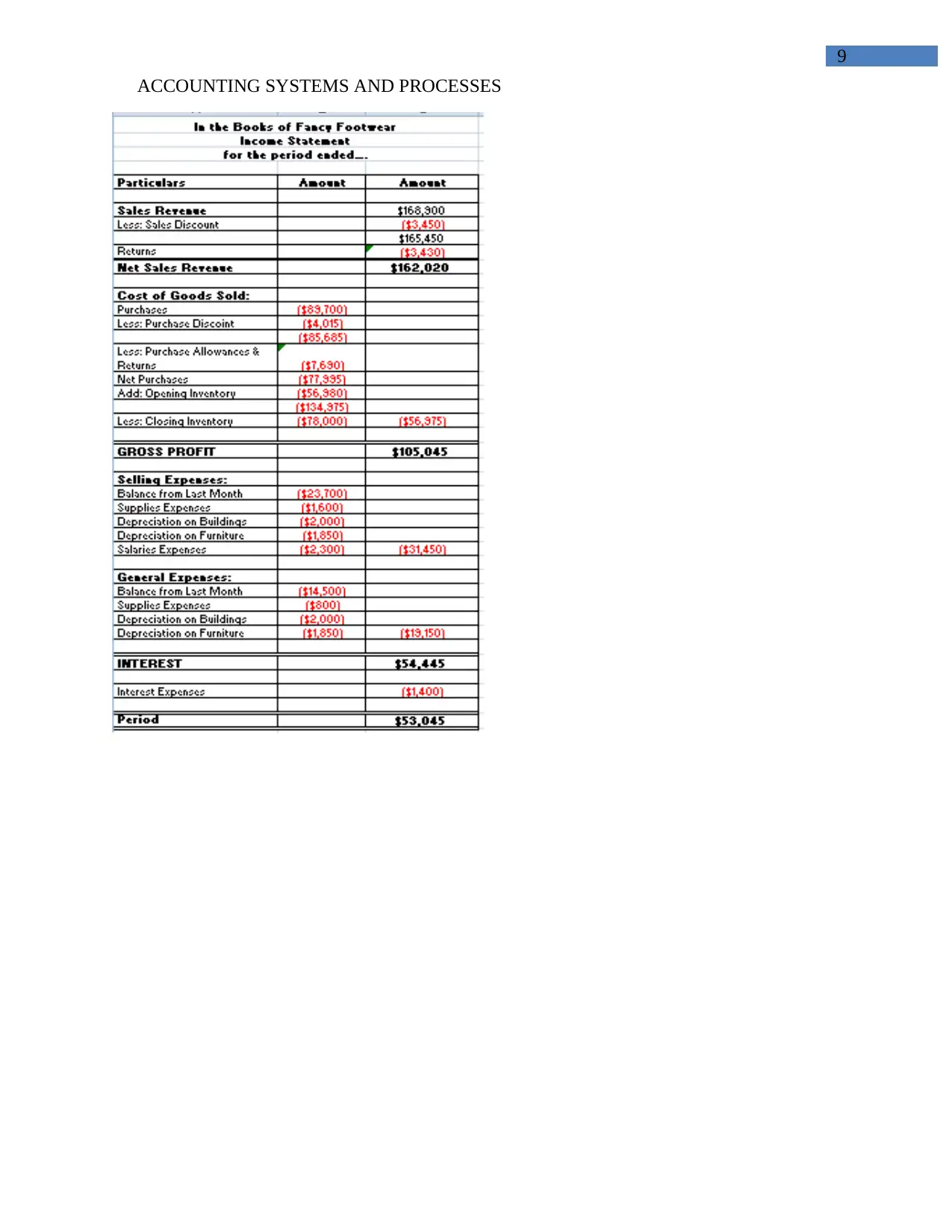
9
ACCOUNTING SYSTEMS AND PROCESSES
ACCOUNTING SYSTEMS AND PROCESSES
⊘ This is a preview!⊘
Do you want full access?
Subscribe today to unlock all pages.

Trusted by 1+ million students worldwide
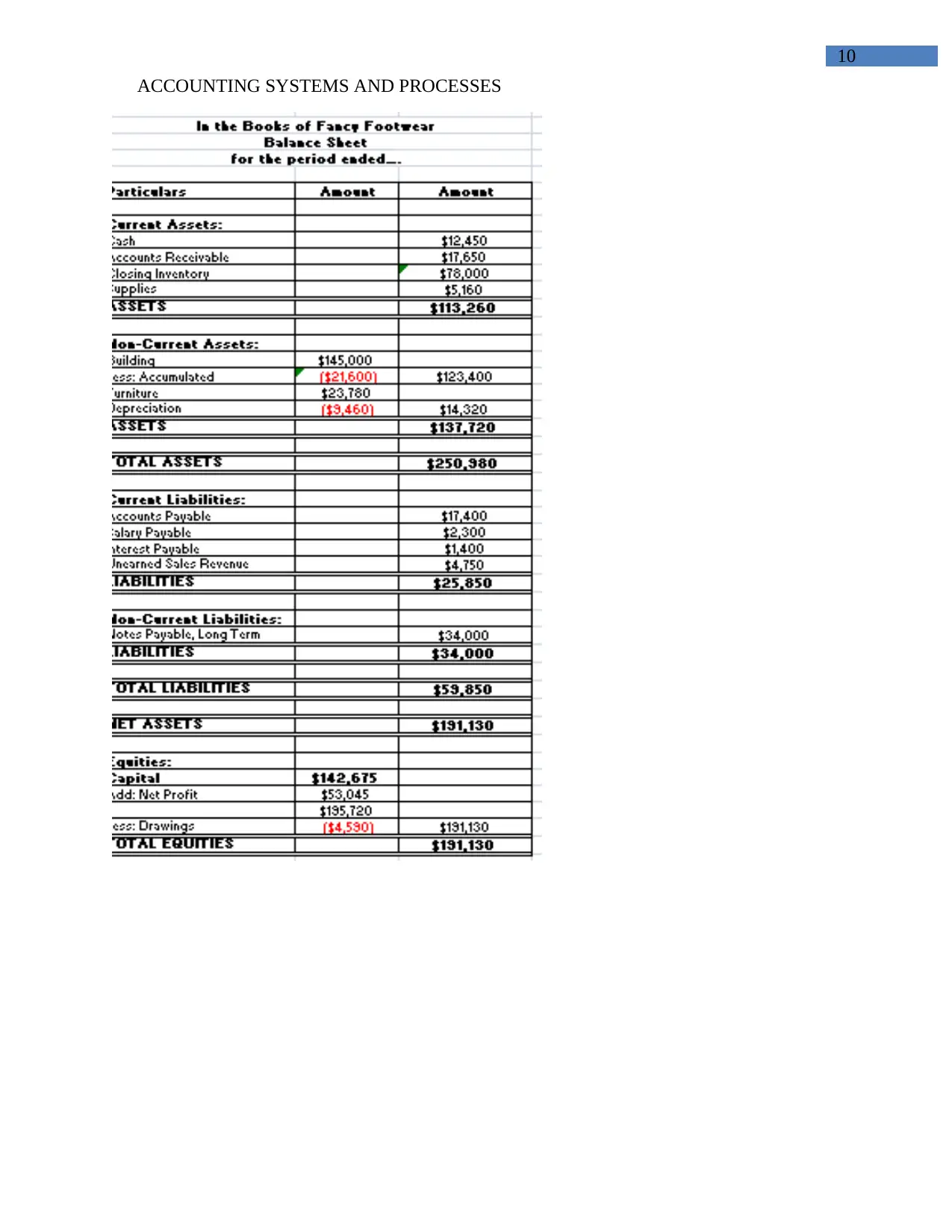
10
ACCOUNTING SYSTEMS AND PROCESSES
ACCOUNTING SYSTEMS AND PROCESSES
Paraphrase This Document
Need a fresh take? Get an instant paraphrase of this document with our AI Paraphraser
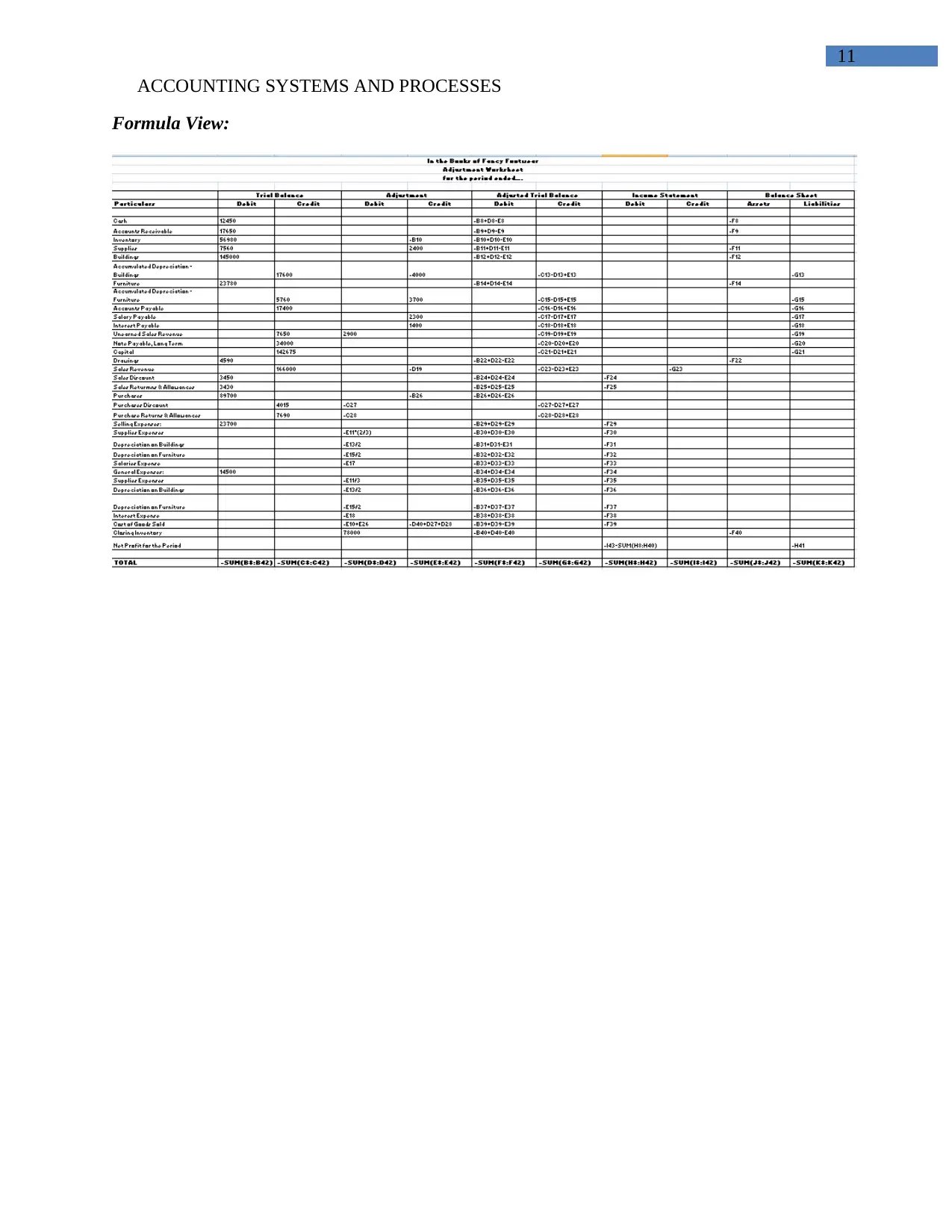
11
ACCOUNTING SYSTEMS AND PROCESSES
Formula View:
ACCOUNTING SYSTEMS AND PROCESSES
Formula View:
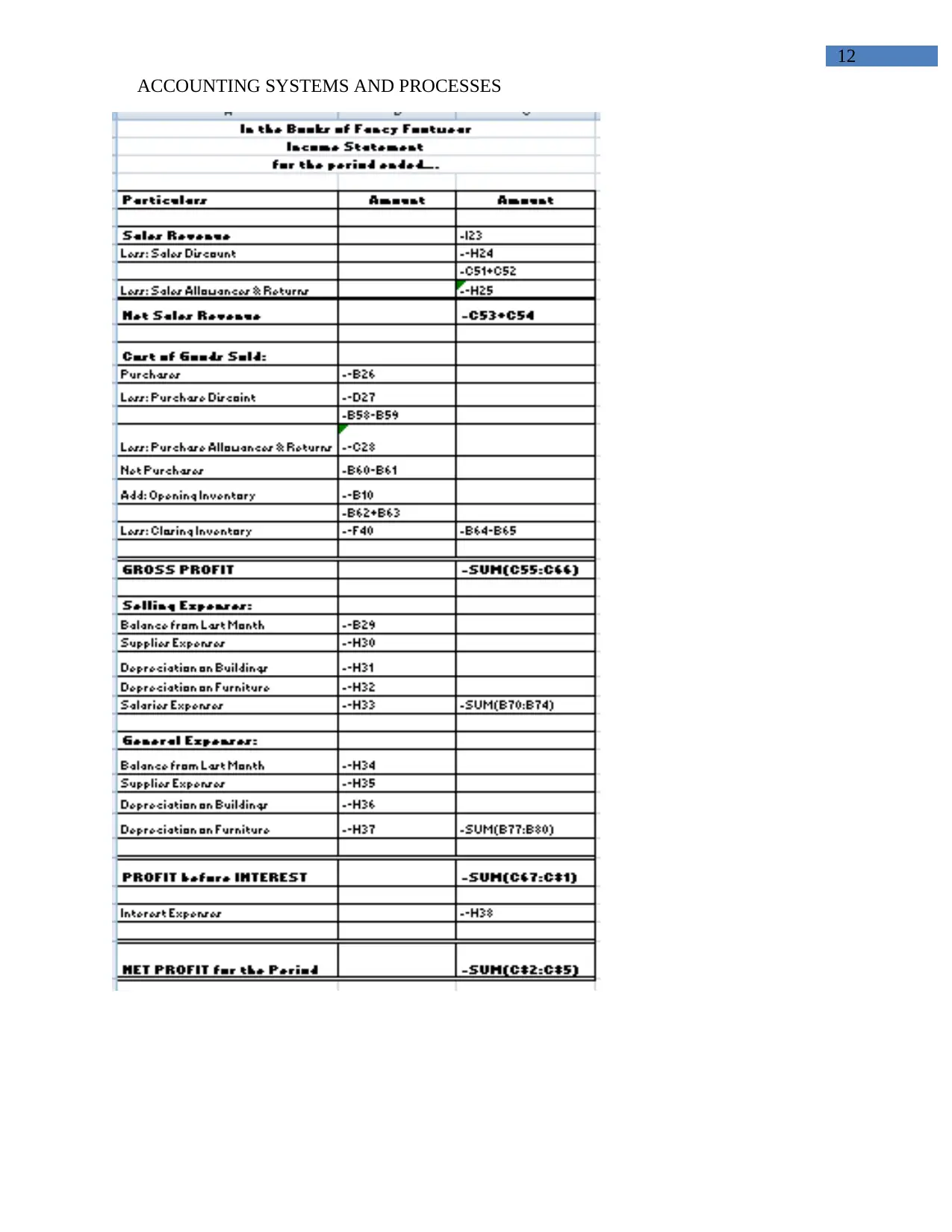
12
ACCOUNTING SYSTEMS AND PROCESSES
ACCOUNTING SYSTEMS AND PROCESSES
⊘ This is a preview!⊘
Do you want full access?
Subscribe today to unlock all pages.

Trusted by 1+ million students worldwide
1 out of 27
Related Documents
Your All-in-One AI-Powered Toolkit for Academic Success.
+13062052269
info@desklib.com
Available 24*7 on WhatsApp / Email
![[object Object]](/_next/static/media/star-bottom.7253800d.svg)
Unlock your academic potential
Copyright © 2020–2025 A2Z Services. All Rights Reserved. Developed and managed by ZUCOL.





